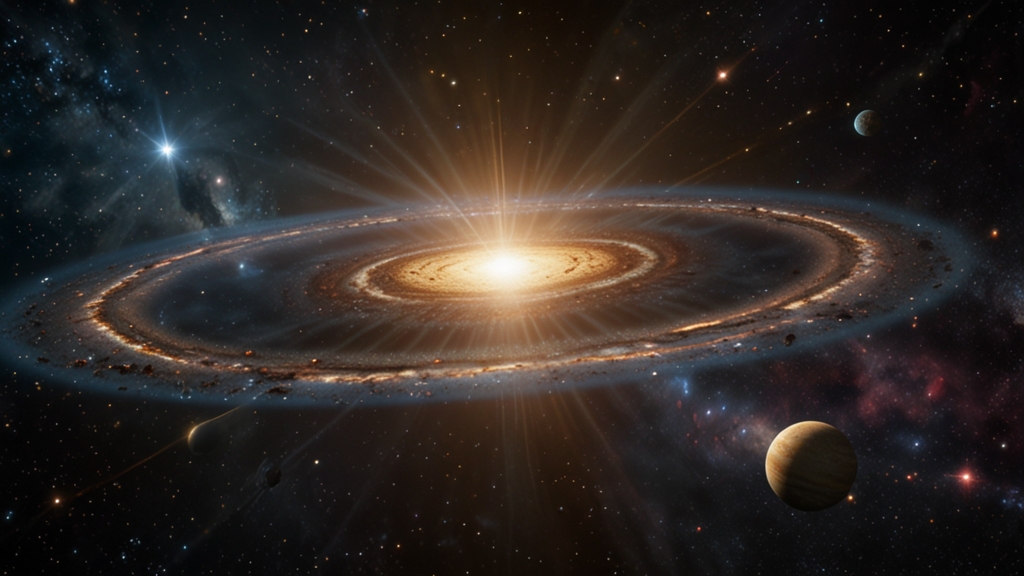The Great Ecosystem Collapse: How Climate Change is Endangering Earth's Biodiversity
Climate change is no longer a distant or hypothetical threat; it is a reality that is reshaping our world significantly. One of the most alarming consequences of climate change is the impact it is having on Earth's biodiversity. The intricate web of life that supports countless species, including humans, is under unprecedented stress. This article delves into the profound ways climate change is threatening ecosystems and the biodiversity that relies on them.
Rising Temperatures and Habitat Destruction
One of the clearest indicators of climate change is the increase in global temperatures. This warming trend is not just a matter of degrees; it has life-or-death implications for numerous species. As habitats become inhospitable, many organisms find it challenging to survive, let alone thrive.
"Without immediate action, we risk losing thousands of species, many of which have never been documented by science." - Dr. Jane Goodall
From the polar bears in the Arctic to the coral reefs in the tropical oceans, ecosystems are being dismantled at an alarming rate. Polar regions are losing ice at unprecedented rates, directly impacting species like seals and penguins that rely on ice-covered waters for their survival.
Ocean Acidification and Marine Life
The world's oceans absorb about a quarter of the carbon dioxide emitted by human activities, leading to ocean acidification. Increased acidity disrupts the delicate balance of marine ecosystems and affects a wide range of marine organisms, particularly those with calcium carbonate shells or skeletons, such as corals, mollusks, and some species of plankton.
"Ocean acidification is climate change’s equally evil twin." - Sylvia Earle
The degradation of coral reefs, often considered the rainforests of the sea, is especially concerning. Coral reefs support an estimated 25% of all marine life. As these rich ecosystems diminish, the biodiversity within them faces a dire future.
Shifting Ecosystems and Species Displacement
Climate change forces species to migrate toward more favorable conditions. However, not all species can move, and those that do often encounter new, unforeseen challenges. When flora and fauna shift their ranges, it disrupts existing ecosystems and the species that depend on them. For instance, in mountain ranges, as temperatures rise, species move higher in altitude. But they eventually run out of space, leading to population declines or extinctions.
Predators and prey are being separated, plants are blooming earlier than pollinators can adapt, and ecosystems are losing their functional integrity. This loss of balance can lead to decreased population sizes and, ultimately, species extinction. Researchers have noted a significant increase in recorded extinctions over the past few decades, with climate change identified as a major driver.
"The fate of the world's wildlife is inextricably linked with the climate and health of our planet." - E.O. Wilson
Mitigating the Impact: A Global Call to Action
While the situation is dire, it is not hopeless. Mitigating the impact of climate change on Earth's biodiversity requires concerted global efforts. This includes reducing greenhouse gas emissions through the adoption of renewable energy sources, protecting and restoring natural habitats, and enforcing stricter environmental regulations.
On a more personal level, individuals can contribute by reducing their carbon footprints, supporting conservation efforts, and advocating for policies that address climate change and biodiversity loss. Education and awareness are also crucial in galvanizing action across communities and nations.
The interconnectedness of life on Earth means that the decline of biodiversity could have far-reaching consequences, affecting ecosystems' ability to provide services vital for human well-being, such as clean air, water, and food. Recognizing the importance of biodiversity and taking immediate, sustained action to protect it is not only an ecological imperative but also a moral one.
Conclusion
The great ecosystem collapse driven by climate change represents one of the most significant challenges of our time. The threat to biodiversity is immediate and acute, carrying implications that extend well beyond environmental concerns to the very fabric of human existence. By acting now, we have the opportunity to preserve Earth's rich tapestry of life for future generations, ensuring that our planet remains vibrant and life-sustaining for all its inhabitants.








